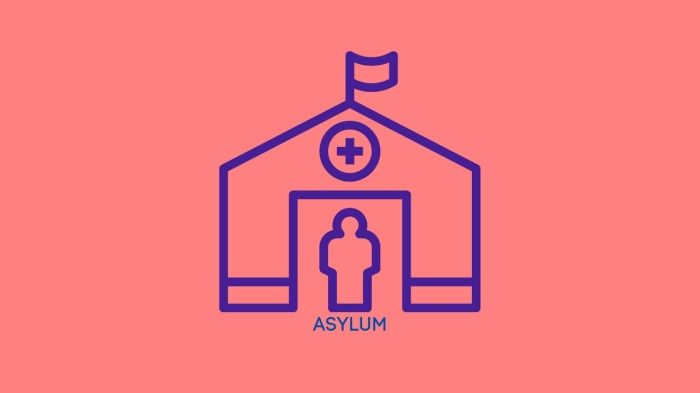Every year, thousands of people who are either in the US or at the US border apply for asylum because they have suffered or have credible fear that they will suffer persecution in their home country based on race, religion, nationality, or membership in a particular social group or political opinion. If you are among one of them, then this article is right for you. In this article, we will discuss how an individual can seek asylum in the US.
How to seek asylum in the US?
A person can seek asylum in the US in two ways: Affirmative Process and Defensive Process. The Affirmative asylum process is for those who are not in removal proceedings, and the defensive asylum process is for individuals in the removal proceedings.
Applying for asylum through the Affirmative Asylum Process
The non-US citizens who want to apply for asylum through the affirmative process must be physically present in the US. Your current immigration status or how you have arrived in the US (whether legally or illegally) will not affect your eligibility to apply through this process.
You must apply for affirmative asylum within one year of your last arrival in the US except in the cases:
- If your circumstances have changed and the change has a material effect on your eligibility to apply for asylum or under extraordinary circumstances that caused a delay in your filing.
- You can show that you have filed an asylum application within a reasonable time given the above circumstances.
To apply for affirmative asylum, you must submit Form I-589, Application for Asylum and Withholding of Removal, to the USCIS.
Steps for applying for asylum in the US through the Affirmative Asylum Process
Step 1: You must be physically present in the US
Step 2: You have to file form I-589, Application for Asylum, and for withholding of removal with USCIS within one year of your last arrival in the United States (unless you have an exceptional case)
Step3: After USCIS has received your application, you will be provided with the receipt of your application and notice to visit your nearest Application Support Center (ASC) for fingerprinting. Give your fingerprints by visiting your nearest ASC.
If your spouse and children are also seeking asylum and are physically present in the US, they also need to go to your ASC appointment.
Step 4: USCIS will schedule an interview with an asylum officer and send you a notice that will contain the date, location, and time of your asylum interview.
Step 5: You have to give an interview, and if your spouse and children seek derivative asylum benefits, you must also take them to the interview.
Step 6: The asylum officer will determine whether you should be granted asylum status or not. You will generally receive the asylum officer’s decision in 2 weeks, which you can collect from the asylum office.

Defensive Asylum processing
When you file a defensive asylum application, you do it to avoid being deported from the United States. To qualify for defensive asylum processing, you must be a defendant in removal proceedings in an immigration court case with the Executive Office for Immigration Review (EOIR).
Individuals are usually placed in the defensive asylum in any of the following ways:
- They are referred to an immigration court by USCIS after the affirmative asylum process determines that they are ineligible for asylum or,
- They are placed in removal proceedings because they:
- Were apprehended in the United States or at a US port of entry for not having proper legal documents or are in violation of their immigration status or,
- They were trying to enter the US without proper documentation and were apprehended by US Customs and Border Protection (CBP). Further, they were placed in the expedited removal process and were found to have a credible fear of persecution or torture by an asylum officer.
The immigration judge hears your case and decides on the merits whether you are eligible for asylum through the Defensive Asylum Process or not. In case you are found ineligible for getting asylum, you will be deported from the US. However, you will be provided an opportunity to show if you are eligible for any other forms of relief from removal before ordering your deportation. If you fail to show, you will finally be deported unless you appeal to the immigration judge’s decision.
What is the fee to apply for asylum?
There is no fee to apply for asylum in the US. You only have to file Form I-589, Application for Asylum and Withholding of Removal.
Can I bring my family to the US once I am granted asylum?
Yes, you can bring your spouse and child under 21 years of age and unmarried by filing Form I-730, Refugee/Asylee Relative Petition. There is no fee for filing such a form.
Unless there is a humanitarian ground for not applying, you must file your application within 2 years of getting protection under asylum status.
Can I apply for asylum from outside the US?
No, the US laws do not permit individuals to apply for asylum from outside the US. Asylum can be sought by an individual in the US and has been persecuted or has a credible fear of being persecuted based on his religion, race, political opinion, nationality, and membership in a particular social group goes back to his home country. You cannot set aside the physical presence requirement.
Conclusion
Are you having a fear of persecution? This article has guided you on applying for asylum if you are physically present in the US. In case you have any other query you can drop a message to us. Our immigration asylum attorneys will be delighted to help you.












 by Prozco®
by Prozco®